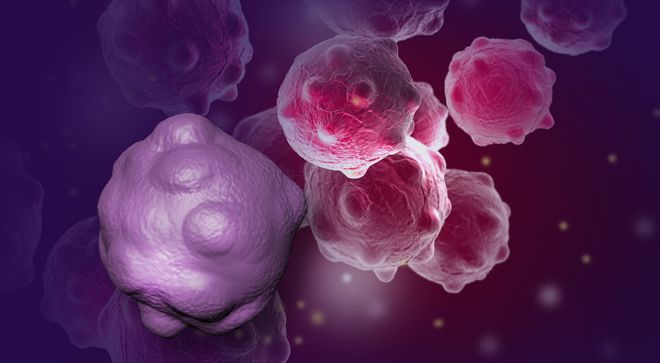News
Article
TILs in Early Stage TNBC May Have Potential as Biomarker
Levels of tumor-infiltrating lymphocytes in patients with stage 1 triple-negative breast cancer may be a biomarker to help with optimized treatment plans.
Some patients with stage 1 triple-negative breast cancer who were not treated with chemotherapy showed better breast cancer-specific survival.

Having a higher level of tumor-infiltrating lymphocytes (TILs) in patients with stage 1 triple-negative breast cancer who were not treated with chemotherapy was shown to have better 10-year breast cancer-specific survival, but more research is needed, an expert told CURE®.
TILs are a type of immune cell that has the ability to recognize cancer cells and destroy them, according to the National Cancer Institute.
“They are an important piece of information that we are trying to understand more recently because tumor-infiltrating lymphocytes mean that the body's immune system is also trying to fight the cancer,” added Dr. Mridula George, associate program director, Breast Medical Oncology at Rutgers Cancer Institute and RWJBarnabas Health, during an interview with CURE®.
In a retrospective JAMA Network study, 4,511 women with stage 1 triple-negative breast cancer were included. The researchers measured patients’ TIL levels, in which 775 of the 4,511 patients had levels below 30%, 266 had 30% or higher, 203 had 50% or higher and 141 had 75% or higher.
Of note, patients who had TIL levels of at least 30% and higher were associated with better breast cancer-specific survival, the researchers found. These overall findings led researchers to believe that there is potential for TILs to be a biomarker used to optimize treatment for patients with stage 1 triple-negative breast cancer.
WATCH MORE: Trodelvy Improves Quality of Life Over Chemo in TNBC
Why TILs Are Important
Because higher levels of TILs try to help the body destroy stage 1 triple-negative breast cancer, researchers noted that chemotherapy treatment may need to be optimized. However, more research needs to be done before researchers can establish that this is true.
“The body's immune system is most likely fighting the cancer. These are smaller stage 1 cancer, so if [the tumor is] completely removed and the body's immune system is also playing a role, we can assume that they're able to eliminate the cancer cells,” George said. “But again, we need more prospective data.”
George noted that it’s important that studies are moving closer to determining whether TILs can be a biomarker in breast cancer.
“This is important because it's giving us another biomarker that can help us understand if there is a subgroup of patients who can avoid chemotherapy. In hormone-positive breast cancers, we have an assay [laboratory test to measure an amount of substance] called the Oncotype assay and we are able to avoid chemotherapy in a lot of patients based on that assay,” George explained. “But it took [more than] 10 years to develop that assay and validate it, and we are using it currently in our clinic. Similarly, for patients with triple-negative breast cancer, this is an additional biomarker that we're getting information about, we need to do more studies to understand who that is. Is there a subgroup of patients [for whom] we can avoid chemotherapy? It is not practice-changing right now.”
The Role of Chemotherapy in Stage 1 Triple-Negative Breast Cancer
For patients with stage 1 triple-negative breast cancer, George said chemotherapy is still recommended, particularly for patients whose tumors are five millimeters or more.
“If you look at the overall population, if you looked at everyone who was included in the study, the recurrence-free survival in this entire group was about 48%, which is pretty low for stage 1 triple-negative breast cancers, and most of these patients did not get chemotherapy,” she said. “So, there is a risk of recurrence (cancer returning) without chemotherapy in stage 1 triple-negative breast cancers; however, patients who had a higher expression probably did not need chemotherapy and they do well without chemotherapy.”
Nevertheless, chemotherapy has side effects that may affect patients’ quality of life, meaning patients and their care teams have to “weigh the risks and benefits,” George said.
“Chemotherapy, depending on the regimen, can affect the heart. It can cause nerve damage and can cause neuropathy in the fingertips and toes. It affects your cell count. These are different side effects of chemotherapy, and we have to take into account these risks,” she explained. “But also the benefits — a lot of patients did have a recurrence in this study because these patients did not get chemotherapy in this group. The study was based in the Netherlands, and they are going to do a clinical trial where they are going to look at patients who have a high expression of TILs, say, [more than] 50%. Then, half the patients are going to get chemo and the other half are not going to get chemo to see if we can omit chemotherapy in patients with higher TILs. But at this point, it is not going to affect our standard of care because we need to get more data.”
For more news on cancer updates, research and education, don’t forget to subscribe to CURE®’s newsletters here.




